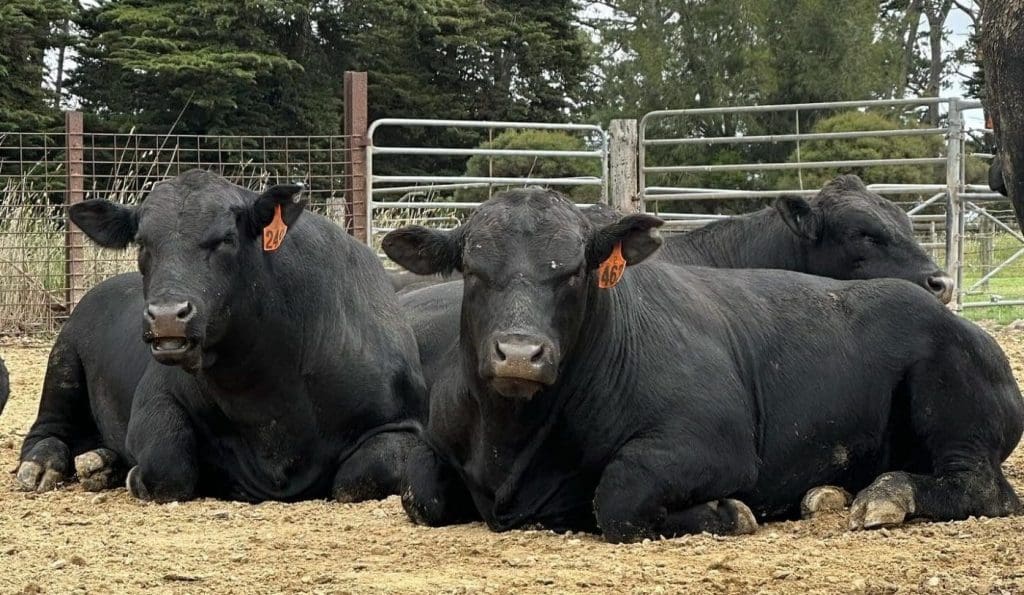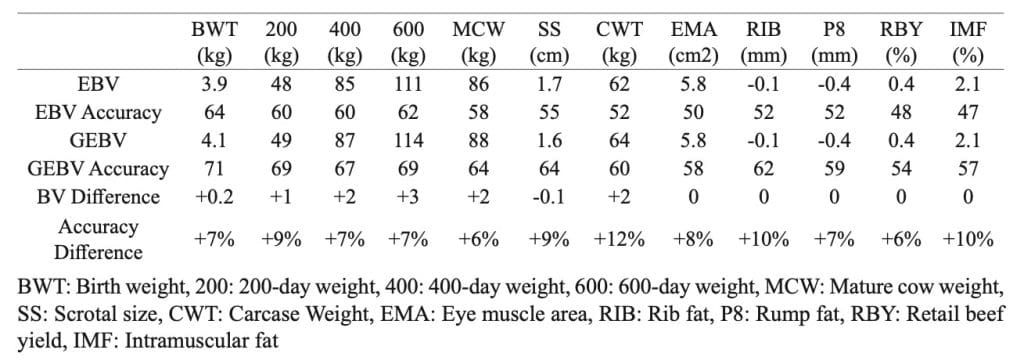
THE search for a new herd sire can become exhausting. The number of bulls available for selection within breeds and across the entire industry is quite overwhelming.
For example, during the 2023 spring bull selling season, at least 15,000 bulls were sold through auctions on-farm or at multi-vendor sales. If the large number of bulls sold privately and direct from paddock was also reported, the actual number of sales could well exceed 25,000.
In the context of these numbers, it is unsurprising that many producers are seeking a method to simplify their selection choices.
Even within breeds, the numbers can still be overwhelming. Again referring to a sample from the spring sales of 2023, at least 5700 Angus bulls were sold at auction from some 82 different prefixes. Many of these sales offered a minimum of 40 bulls to upwards of 200.
Without a clear plan and a goal in mind, it is highly likely that bulls with significant genetic merit can be overlooked. This can be happen due simply to the ‘noise’ associated with so many animals and data in catalogues, through to other factors.
In recent years, breed societies have increasingly improved opportunities for producers to search for bulls more effectively. Sale catalogues are accessible online and can be searched and sorted using defined EBVs to develop a preferred list based on a producers breeding objectives.
This method has at least allowed producers to sort through and have a list which can be narrowed down for a breed, and more importantly for a particular sale a producer may be attending. Ideally, the list forms the starting point for the visual inspection that should happen before a bid is made at the sale.
Genomic comparison
While this method of discovering a new bull is a practical and effective approach, it does not always ensure that all bulls capable of making genetic improvement to a herd are discovered.
A paper published as part of last year’s Australian Animal Genetics & Breeding conference in Perth highlighted that including genomics as part of the search criteria made a noticeable impact on the bulls that could be discovered and potentially purchased for use in achieving genetic improvement within a herd.
The paper presented by staff from Angus Australia, looked at data from an actual beef herd where potential sires were ranked using EBVs. This ranking is similar to the process producers would use for their own selection decisions.
The focus of the study was an Angus breeder with a long history of performance recording for genetic analysis. The project was based on an analysis of 138 bulls which represented the entire group of male calves present in the herd at the time of DNA sample collection, which was 93pc of the 149 male calves born in the herd in that birth year.
The study conducted and presented by Matt Reynolds, Angus Byrne, Christian Duff and Peter Parnell, considered the impact including genomic information would have on the ranking of bulls.
The study conducted two analyses, conducted using the September 2018 Angus BreedPlan analysis. The first was initially conducted using all the available pedigree, performance and genomic information included (GEBV), as per the EBVs published to industry.
The second analysis used only the available pedigree and performance information and excluded the genomic information.
While not all seedstock breeders are incorporating genomic testing in their data collection at this stage, this project does suggest it is a strategy not to be overlooked
Including genomic information into EBVs will improve accuracy.
The analysis of the EBVs for the 138 bulls showed that including genomic information resulted in little movement in the average of the EBVs. However it was noted that the accuracy of the EBVs did increase.
Across the 12 EBVs that were analysed, there were varying degrees of change in those accuracies, ranging from a 7pc improvement in the accuracy for EBVs for Birth Weight, 400 & 600 day weight, to 10pc for IMF percentage and Rib Fatness.

Average EBV and accuracy change in 138 bulls with the incorporation of genomic information. Source M.J. Reynolds, A.I. Byrne, C.J. Duff and P.F. Parnell Proceedings of the AAAGB 23rd Conference
One of the more notable findings from the analysis was that although the average of the EBVs didn’t change substantially, when the genomic information was included in the analysis, there was an increase in the spread of EBVs. This becomes significant for producers looking to identify those bulls with greater genetic merit and potential for their herd.
The spread across the EBVs when genomic information was included is startling. As can be seen in the table below, the variation in traits was substantial for a number of traits.

Standard deviation of EBVs in 138 bulls with the incorporation of genomic information. Source M.J. Reynolds, A.I. Byrne, C.J. Duff and P.F. Parnell Proceedings of the AAAGB 23rd Conference
From a practical application, these insights are valuable. Effective selection is based on identifying animals with the greatest genetic merit for a defined breeding objective.
While a group of bulls may be presented with EBVs that are highly accurate, producers still need to be able to rank bulls on the basis of genetic merit. Ideally a producer would want to assess a group of contemporary bulls and rank them on the basis of genetic merit and not just on breeding value alone.
The project considered this requirement and ranked all 138 bulls firstly on EBVs without using the genomic information. When the genomic information was included, there were five animals that made their way int the top 15 ranking, pushing out other bulls that had lower genetic merit.
Its worth noting that if genomics hadn’t been included, those bulls could easily have been overlooked and not purchased by a producer, impacting their ability to achieve useful genetic progress in their herd.
While not all seedstock breeders are incorporating genomic testing in their data collection at this stage, this project does suggest it is a strategy not to be overlooked.
Not only does it assist in developing more accurate EBVs, there are other advantages. These include developing EBVs for young animals, it can also allow EBVs to be published on sires for traits that are hard to measure, or traits that cannot be measured prior to an animal entering the breeding herd.
Additionally genomics has value for those traits that have a low heritability; as well as in situations where collecting effective performance information is problematic.
More significantly, for breeders looking to provide their clients and commercial producers with information that allows them to discover and rank bulls for their suitability to a breeding objective, including genomics into performance records and improved EBVs will result in greater selection accuracy and improvement in breeding herds and production.
 Alastair Rayner is the Principal of RaynerAg, an agricultural advisory service based in NSW. RaynerAg is affiliated with BJA Stock & Station Agents. He regularly lists and sell cattle for clients as well attending bull sales to support client purchases. Alastair provides pre-sale selections and classifications for seedstock producers in NSW, Qld, and Victoria. He can be contacted here or through his website www.raynerag.com.au
Alastair Rayner is the Principal of RaynerAg, an agricultural advisory service based in NSW. RaynerAg is affiliated with BJA Stock & Station Agents. He regularly lists and sell cattle for clients as well attending bull sales to support client purchases. Alastair provides pre-sale selections and classifications for seedstock producers in NSW, Qld, and Victoria. He can be contacted here or through his website www.raynerag.com.au



HAVE YOUR SAY